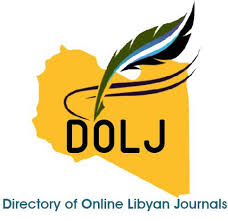The effect of Blood Groups on infection with the Covid-19 Virus in Al-Zawia Region
DOI:
https://doi.org/10.54361/LJM172.10Keywords:
Blood Groups, Corona Covid-19, DiseaseAbstract
COVID-19 is the disease caused by a coronavirus called SARS-CoV-2. This study carried out on a number of 114 respondents (who got infected with the COVID-19 disease and recovered, as the number of females was about 56, or 49%, and the number of males was 58, or 51%, the mean age was 44 years old). The study was conducted in the Zawia area to reveal the blood groups and its effect on infection with the Coronavirus, Covid-19. The current research shows a strong relationship between some diseases and infection of Coronavirus. On the other hand, the most blood group respondents were A and O with a number of 45 for both. In addition, the largest number of respondents was employees with 30 patients followed by teachers with 26 respondents. Most respondents got simple Pain and the largest number was 30 patients with A blood group followed by O blood group. The majority of respondents generally feel that they are in good health. The respondents had several diseases of the era, such as blood pressure disease, where the number of people with high blood pressure was 18, or 16%. The periods of infection differed among the respondents, as the number of respondents whose period of infection with this disease lasted for a week was 22, or 19%, while the respondents whose period of infection with this disease lasted for two weeks was 19, or 17%. The relationship between blood groups and corona disease, Crosstabs Tests were conducted between blood groups and the period of infection. The study noted that the value of sig = 0.369, and this indicates that the two characteristics are not independent, that is, there is a relationship between blood groups and the period of infection, as well as with the same test to find the relationship between blood groups Blood and the effect of infection caused by this disease.
Downloads
References
Cohen SP, Baber ZB, Buvanendran A, McLean BC, Chen Y, Hooten WM, Laker SR, Wasan AD, Kennedy DJ, Sandbrink F, King SA. Pain management best practices from multispecialty organizations during the COVID-19 pandemic and public health crises. Pain Med. 2020;21:1331–46
Gerard Thomas Flaherty et. Al (2020), COVID-19 in adult patients with preexisting chronic cardiac, respiratory and metabolic disease: a critical literature review with clinical recommendations, Travel Medicine and Vaccines.
Halila, Shokri and khadher, Fatma (2022) The Extent Effective of the Honey In Resistance the Coronavirus (COVID-19). Alqurtas journal. Libya.
JinSong Geng et. Al (2021) Chronic Diseases as a Predictor for Severity and Mortality of COVID-19: A Systematic Review with Cumulative Meta-Analysis, frontiers in Medicine.
Kumar A, Nayar KR. COVID 19 and its mental health consequences. J Ment Health. 2021;30:1–2.
Laires, Pedro Almeida et al. (2021). The Association Between Chronic Disease and Serious COVID-19 Outcomes and Its Influence on Risk Perception: Survey Study and Database Analysis. JMIR public health and surveillance.
Loura semenzato et. Al (202, Chronic diseases, health conditions and risk of COVID-19-related hospitalization and in-hospital mortality during the first wave of the epidemic in France: a cohort study of 66 million people, The Lancet Regional Health – Europe, volume 8, 100158.
Lyudmyla Kompaniyets, et.Al (2021), Underlying Medical Conditions and Severe Illness Among 540,667 Adults Hospitalized With COVID-19, March 2020–March 2021, preventing chronic disease public health research, practice, and policy volume 18, E66.
Öner Özdemi (2020) Coronavirus Disease 2019 (COVID-19): Diagnosis and Management, Erciyes Medicine journal 2020; 42(3): 242–7 • DOI: 10.14744/etd.2020.99836.
The Republic of Uganda, Ministry of health. Fact sheet of coronavirus covid-19) world health organization (2020).
Tinsae Abeya Geleta et. Al (2021), COVID-19 Pandemic Preparedness and Response of Chronic Disease Patients in Public Health Facilities, International Journal of General Medicine.
Wu F, Zhao S, Yu B, Chen YM, Wang W, Song ZG, Hu Y, Tao ZW, Tian JH, Pei YY, Yuan ML. A new coronavirus associated with human respiratory disease in China. Nature. 2020; 579:265–9.
Zhu N, Zhang D, Wang W, Li X, Yang B, Song J, Zhao X, Huang B, Shi W, Lu R. A novel coronavirus from patients with pneumonia in China, 2019. N Engl J Med. 2020; 382:727–33.
Downloads
Published
Issue
Section
License
Copyright (c) 2023 Shokri Halila, Abdulali Taweel (Author)

This work is licensed under a Creative Commons Attribution-NonCommercial-NoDerivatives 4.0 International License.
Open Access Policy
Libyan journal of medical Research (LJMR).is an open journal, therefore there are no fees required for downloading any publication from the journal website by authors, readers, and institution.
The journal applies the license of CC BY (a Creative Commons Attribution 4.0 International license). This license allows authors to keep ownership f the copyright of their papers. But this license permits any user to download , print out, extract, reuse, archive, and distribute the article, so long as appropriate credit is given to the authors and the source of the work.
The license ensures that the article will be available as widely as possible and that the article can be included in any scientific archive.
Editorial Policy
The publication of an article in a peer reviewed journal is an essential model for Libyan journal of medical Research (LJMR). It is necessary to agree upon standards of expected ethical behavior for all parties involved in the act of publishing: the author, the journal editorial, the peer reviewer and the publisher.
Any manuscript or substantial parts of it, submitted to the journal must not be under consideration by any other journal. In general, the manuscript should not have already been published in any journal or other citable form, although it may have been deposited on a preprint server. Authors are required to ensure that no material submitted as part of a manuscript infringes existing copyrights, or the rights of a third party.
Authorship Policy
The manuscript authorship should be limited to those who have made a significant contribution and intellectual input to the research submitted to the journal, including design, performance, interpretation of the reported study, and writing the manuscript. All those who have made significant contributions should be listed as co-authors.
Others who have participated in certain substantive aspects of the manuscript but without intellectual input should only be recognized in the acknowledgements section of the manuscript. Also, one of the authors should be selected as the corresponding author to communicate with the journal and approve the final version of the manuscript for publication in the LJMR.
Peer-review Policy
- All the manuscripts submitted to LJMR will be subjected to the double-blinded peer-review process;
- The manuscript will be reviewed by two suitable experts in the respective subject area.
- Reports of all the reviewers will be considered while deciding on acceptance/revision or rejection of a manuscript.
- Editor-In-Chief will make the final decision, based on the reviewer’s comments.
- Editor-In-Chief can ask one or more advisory board members for their suggestions upon a manuscript, before making the final decision.
- Associate editor and review editors provide administrative support to maintain the integrity of the peer-review process.
- In case, authors challenge the editor’s negative decision with suitable arguments, the manuscript can be sent to one more reviewer and the final decision will be made based upon his recommendations.













